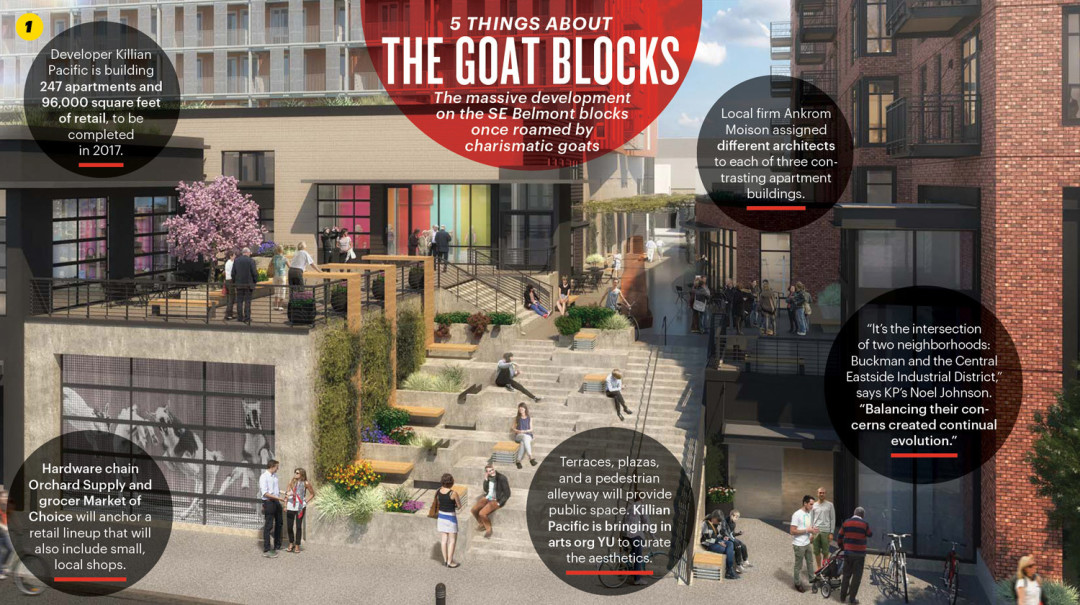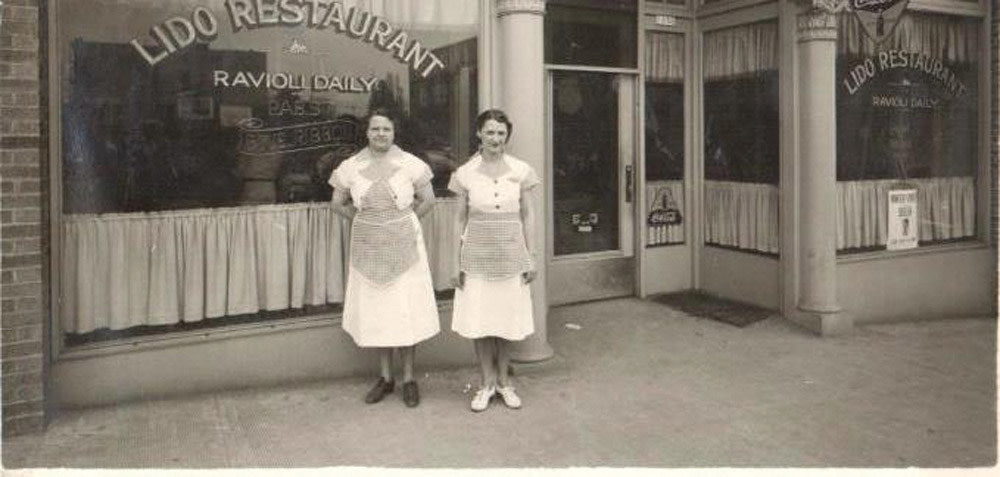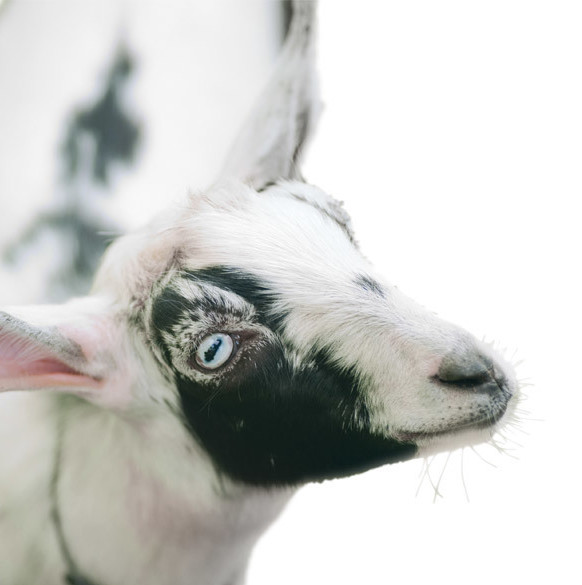The Dirt on Southeast Portland's New Goat Blocks

Image: Killian Pacific
2 THE SIT-DOWN
“That superblock belonged to the Gardeners and Ranchers cooperative of Italian farmers. Fifteen years ago, I heard there might be a possible sale. I’m Italian, and I grew up around a lot of those guys—the patriarch of the whole group was Aldo Rossi, and I knew the Rossi family.
“I walked into the office, and there was a ring of 13 chairs, all the way around: older Italian guys, their sons, all the co-op leaders. And there was one chair in the middle, and that was for me. It was like an inquisition. ‘Who are you?’ ‘What do you propose?’ This property was very important to them. They wanted the community to be respected, and the connection with food to be preserved. Usually, commercial deals are much less emotional. This was more like a residential sale. Over 70 years, hundreds of families—a whole Italian community, really—was supported by that site. Money was not that important to them. They wanted it in good hands.
“I did that three or four times. And one day, they said, ‘OK.’”
3 HUNGRY GOATS
The Belmont Goats resided on the blocks between October 2012 and October 2014. In those two years, they ate the equivalent of: 22,500 Big Ass Sandwiches OR 6.7 Subaru Foresters
4 ROVELLINE A LA MILANESE
For 75 years, the farmers co-op building housed one of Portland’s oldest Italian restaurants, the Monte Carlo, built by Italian immigrant Ernest Ceccanti. (It burned down in 2002.) In 1959, the Oregonian published a recipe for Monte Carlo’s steak specialty:
In large skillet, sauté finely chopped celery, green pepper, garlic, parsley, and onion in olive oil or butter until they start to brown. Season with salt, pepper, allspice, and sage. Add two 8 oz cans tomato sauce and 12 ripe olives. Simmer uncovered for about an hour, stirring occasionally. Dip pounded round steaks (3 lbs) in egg diluted with milk or water and press into fine dry bread crumbs. Brown in olive oil in skillet over high heat. Season with salt and pepper. Drain off olive oil. Add half a cup of dry red wine, turn heat to low, and simmer meat for 5 minutes. Add tomato sauce and simmer, covered, on top of range over low heat or in 250 degree oven for about an hour. Serves 8.

Image: stumptownblogger.com

Image: Jad Images / Shutterstock
5 THE STORY OF THE FARMERS CO-OP
1929 The Gardeners and Ranchers build a two-square-block distribution facility. “This was the central point of contact,” says Joe Rossi, 52-year-old great-grandson of a co-op founder. “It was the Internet of its day.”
1930s–1945 The market hosts a daily bazaar of farmers, wholesalers, and retailers, who begin making deals at 3 a.m. Most business is done in the Genoese dialect. “Even the Japanese guys would speak it,” Rossi says.
After 1945 Refrigerated trucks and modern communications slowly render the facility obsolete. “Safeway could just call my family and say, ‘We need 200 head of lettuce,’” Rossi says.
2000 The co-op sells the complex to MBM Properties, but a few vendors continue operating there. “It went from handling about 90 percent of Portland’s produce to maybe 20,” Rossi says. Fire destroys the building in 2002.
2012–2014 Goats trim the vacant lots’ grass. “It’s such a shame that after generations worked there, it’s known as the ‘Goat Blocks,’” Rossi says. “It should be called the Produce Blocks.”




